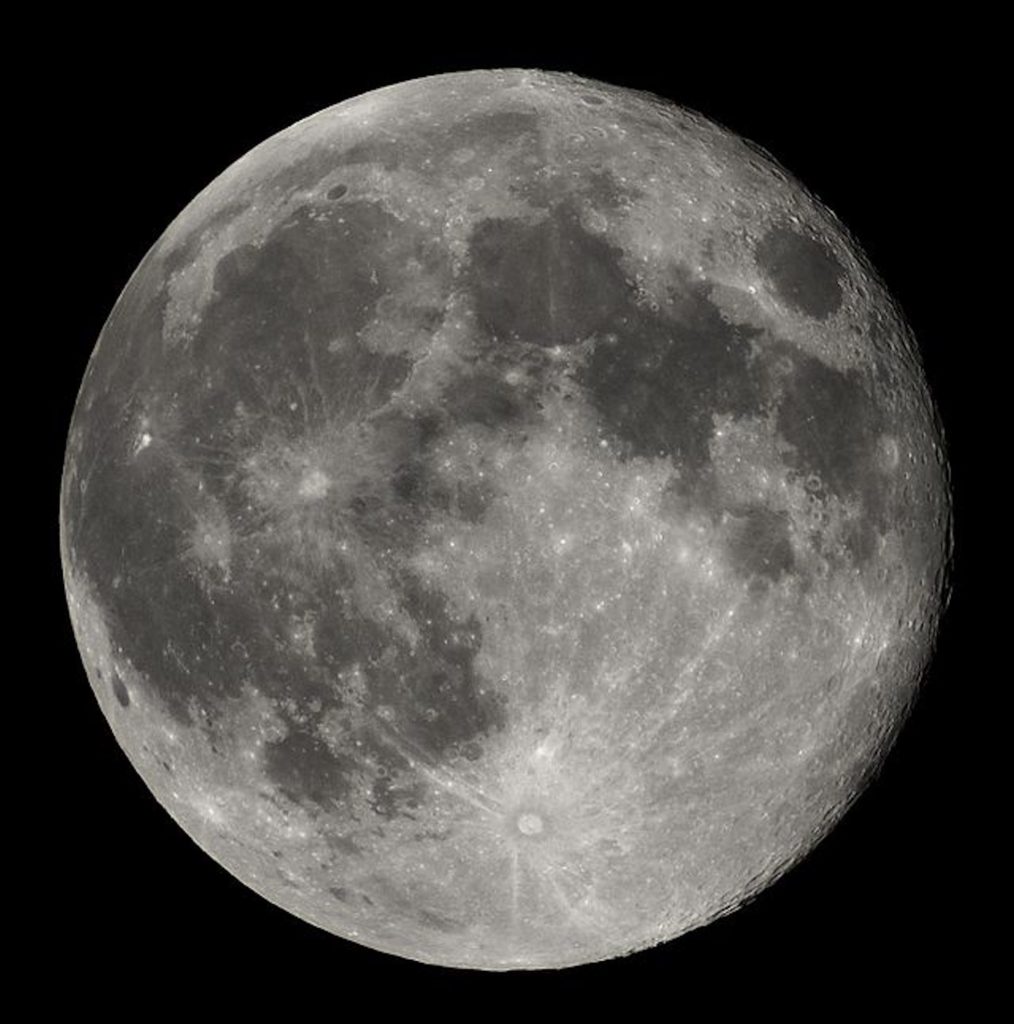The moon visited me the other night. I woke up in the wee small hours of the morning to light shining through a tiny slit in the Venetian blinds. I could not recall a streetlight being in that location, so I got up to look. Lo and behold, it was the moon — or most of it. It was just shy of full, but shining brightly. I went back to bed but now and then opened my eyes and was able to still see it, only as its proper self, not some imitation electric globe. Somehow, I found it comforting to see that moon shining through my window, as though it knew I felt restless and could not settle back into sleep. Shortly after finding it with my eyes, those same eyes closed. I slept soundly until the cats woke me up with their breakfast demands.
The moon counter-balances the sun, which gives its light by day. The moon marks calendars, influences tides, is both a night light and an object of our wonder and exploration. The date of Easter, one of the holiest celebrations of the Christian year, is based on the Sunday after the full moon on or after March 21. If the full moon falls on Sunday, Easter is celebrated the following Sunday. The Jewish festival of Passover is the 15th day of the lunar month of Nisan, frequently close to the date of Easter. Muslims celebrate Ramadan, a month of fasting and prayer, beginning on the day after the rising of the new moon in the ninth month of their lunar calendar.
Lunar calendars are based on months or weeks between full moons. Occasionally, we will have a Blue moon — an unusual and infrequent occurrence. Full moons also affect tides, and there are months when the moon is closest to the earth, which causes higher than usual tides.
During the Exodus from Egypt, the Israelites had a pillar of cloud to guide them by day, but the moon and a pillar of fire at night. Why would they move at night when it would be much easier by daylight? When the sun is closer to earth in the desert, the heat can be blistering. Travel by night is cooler, and navigation is easier even without a pillar of fire. The Magi traveled at night because they were following a particular, very bright star, one that would not be wiped out by the moon, even at its brightest.
At least for me, the moon is a comfort and a friend. Its light often softens sharp edges and angles and brings out birds and animals that sleep by day and feed or hunt by night. Sound seems to travel further in the dark, and everyday sounds are either muffled or absent because the night is a time of rest and sleep for half of the world at a time.
Thinking of Genesis, when the stories tell us of God creating the light of day and the dark of night and the forming of the sun and moon, it was like the beginning of time. The sun and moon revolve on their axes, but their compositions are different. The sun, the burning ball of fire, has no dark side, but the moon, the cold dark world closest to us, does indeed have a side that never sees the sun. When the moon is not shining in the sky, we call it the dark of the moon and wait for the next phase, the new moon, on its way to the full and then waning phases.
I think of the night Jesus spent in Gethsemane, praying to have the strength to do what God had asked him to do. I hope the moon was there, keeping watch while the disciples slept, leaving Jesus all alone. During his time in the wilderness just after his baptism, perhaps the moon gave him some comfort and respite from the heat of the day and the temptations of HaSatan.
I think the moon should be part of my Lenten meditations. I have loved it since I was a child, and I still love it. I am grateful to God for providing this time of rest and relative peace, with a glowing reminder of God’s eternal presence, even in the dark, whether physical darkness or an internal one.
As an old childhood prayer comes to my mind, “I see the moon, and the moon sees me. God bless the moon, and God bless me.” It’s as true today as it was then, thank God.
Image: Moon 2006, property of author.
Linda Ryan is a co-mentor for an Education for Ministry group, an avid reader, lover of Baroque and Renaissance music, and retired. She keeps the blog Jericho’s Daughter. She lives with her three cats near Phoenix, Arizona.

